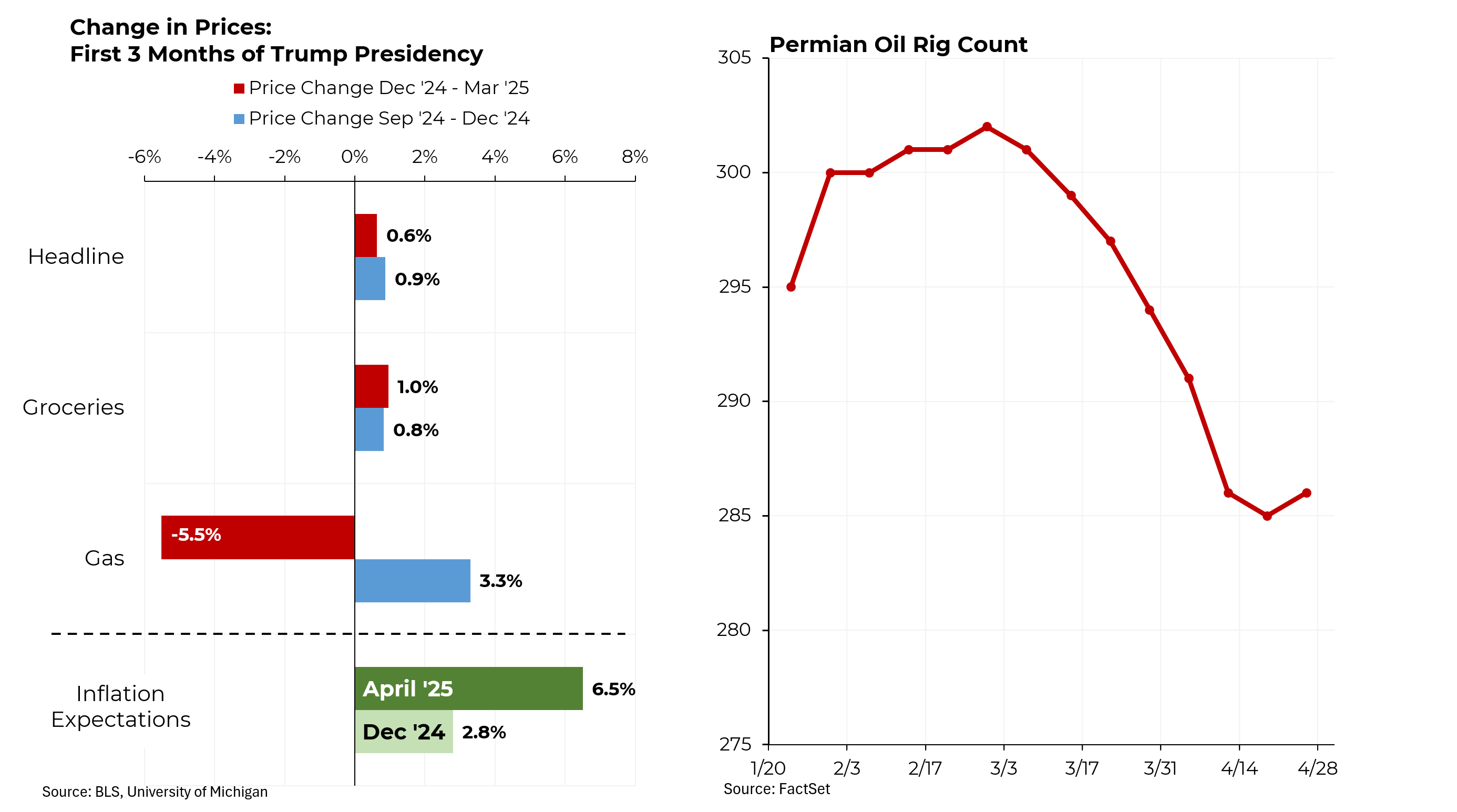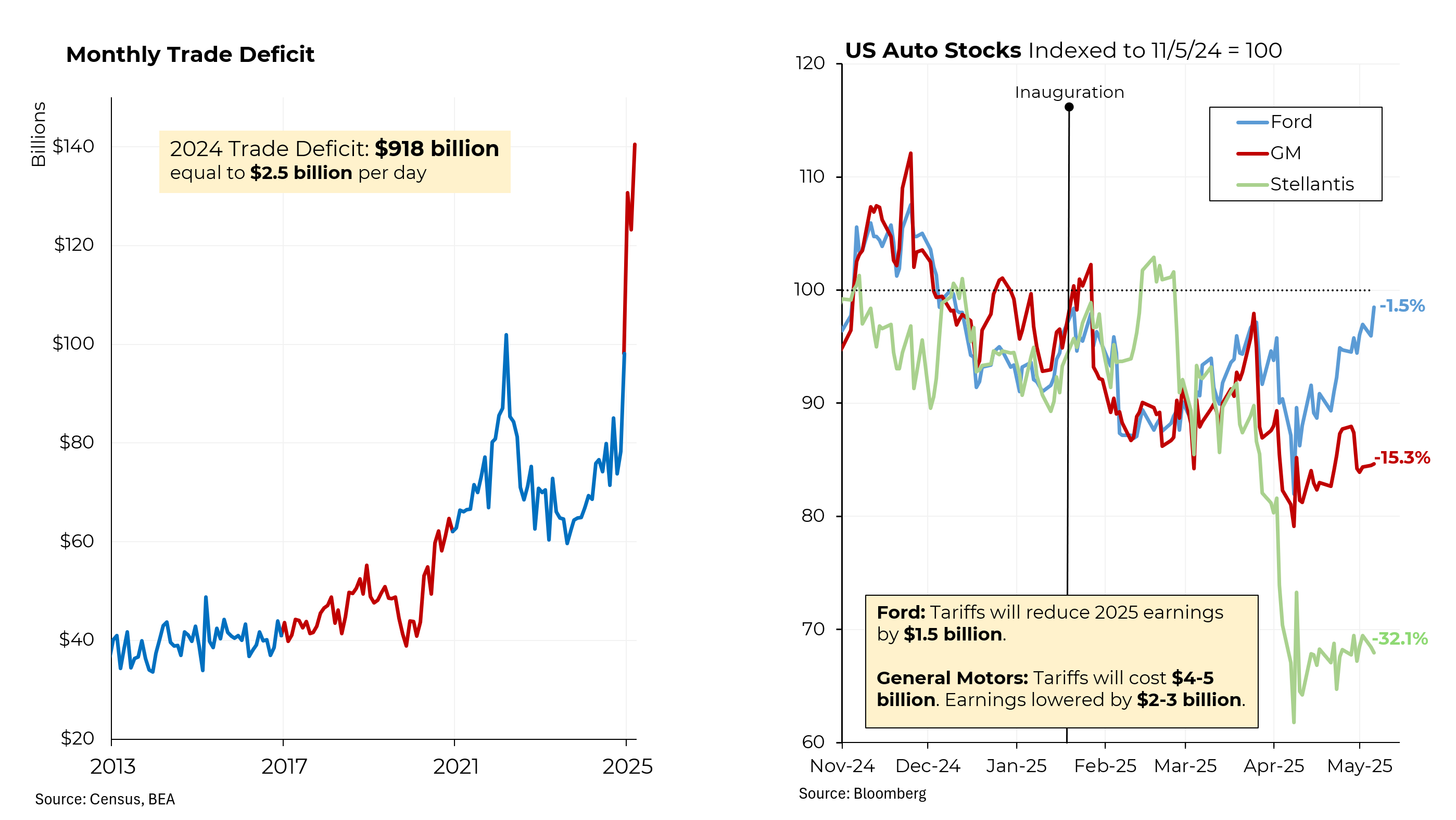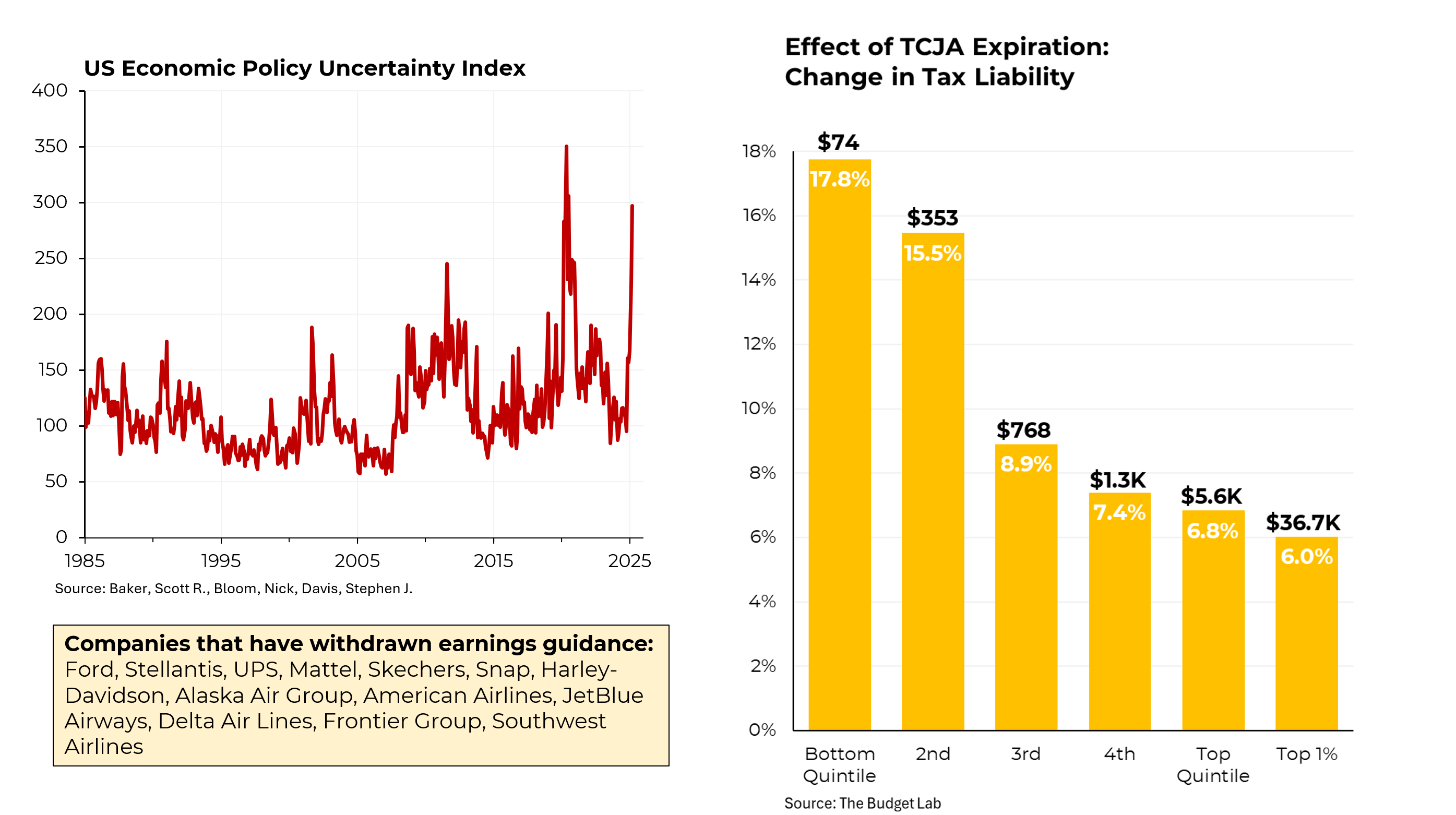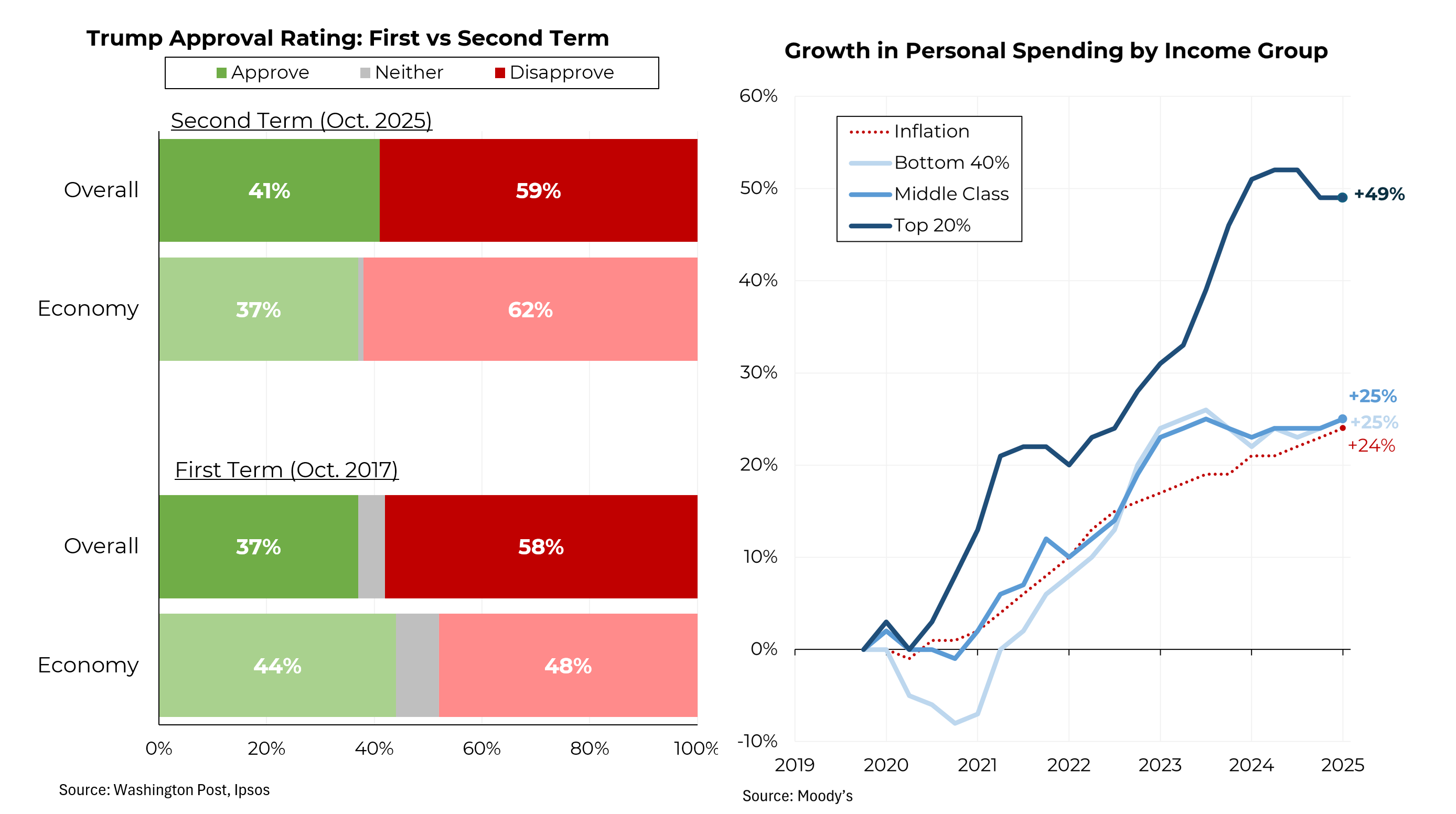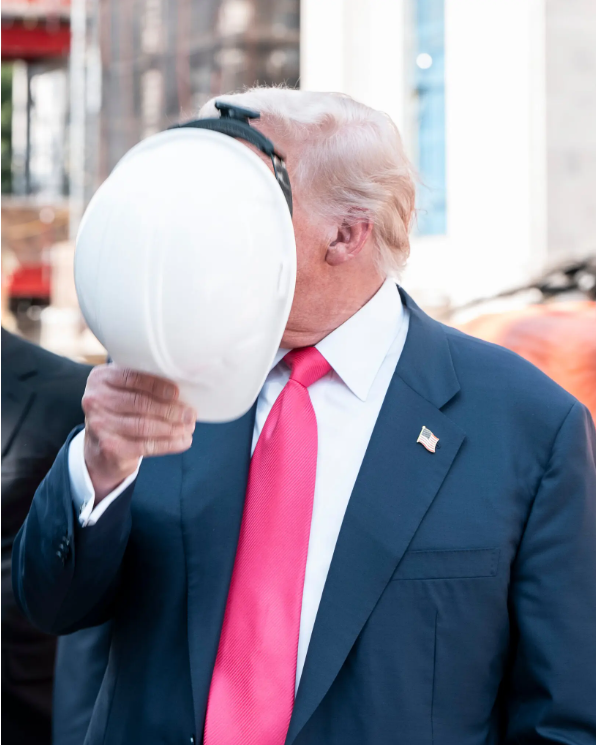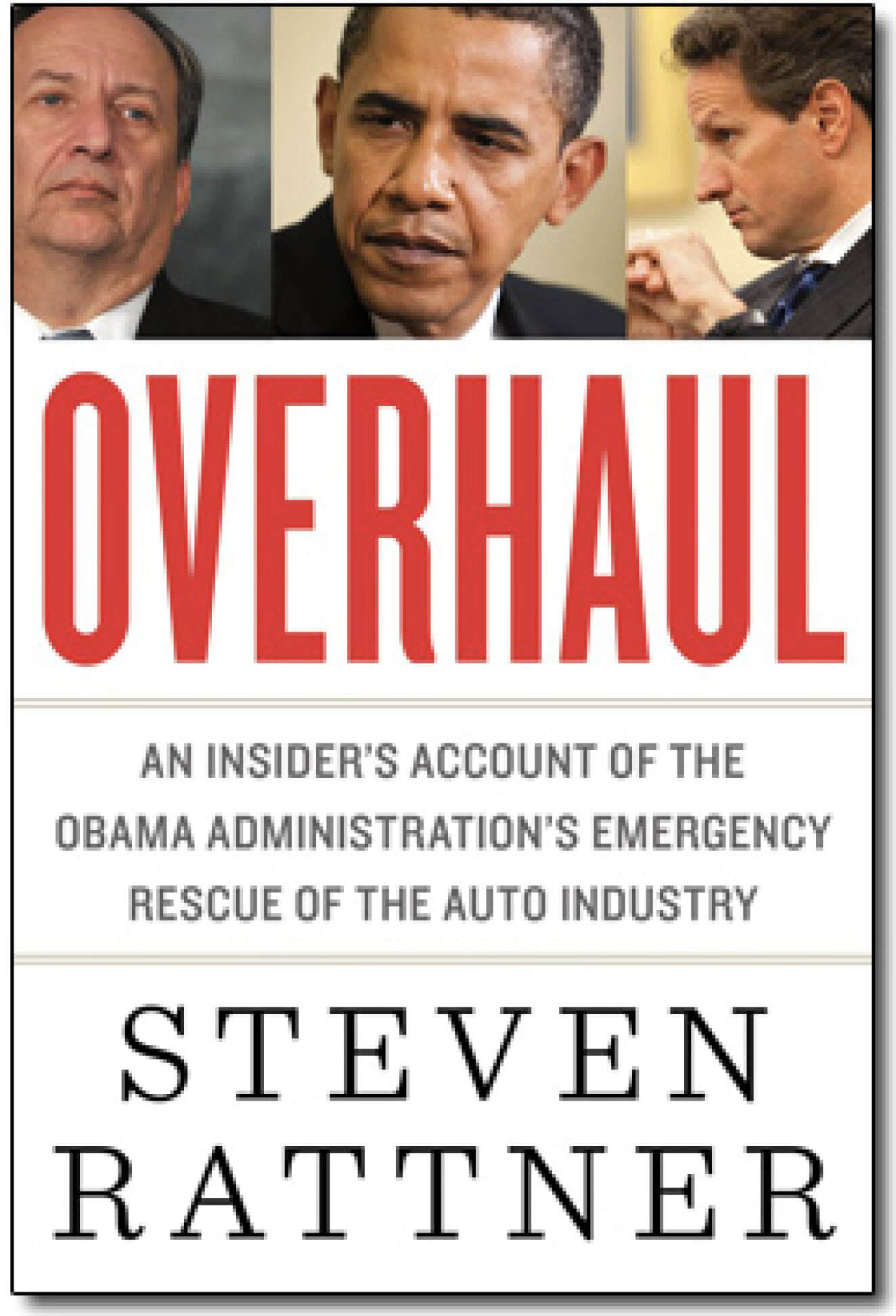Donald Trump’s Meet the Press interview caused shockwaves, particularly around his comments concerning constitutional questions. But the interview was also notable for the large number of misstatements and outright fabrications.
Start with inflation. Trump’s claim that he was able to “get down the costs” was simply not true. Prices have continued to rise, at an annual rate of 2.6% in the first three months of this year, down only modestly from the 3.5% rate in the last three months of 2024. And grocery prices, which Trump also claimed were down, rose faster in the first quarter (an annual rate of 3.9%) than in the fourth quarter of 2024 (a rate of 3.4%).
More concerningly, inflationary expectations on the part of consumers have been rising. In April, they hit 6.5%, up from 2.8% in December.
As for gasoline, yes, prices have been falling. But not because of anything Trump has done; they’ve fallen partly because of OPEC output increases but more importantly, because of concerns about a weakening economy. That’s why the number of drilling rigs operating in the Permian basin, our most prolific oil field, have been falling.
As for trade, first, trade deficits don’t mean that we “lose money.” But putting that aside, Trump’s claim of a $5 to $6 billion daily deficit under President Joe Biden is more than twice what the trade deficit was in 2024. Moreover, the deficit has not been falling; it’s been soaring in 2025, in part because of surging imports in anticipation of the tariffs. In March, the deficit averaged $4.5 billion per day, close to what Trump claimed it averaged under Biden.
As for autos, Trump may think the companies are going to “make a fortune” but both the companies and the stock market believe otherwise. The shares of all the “big three” automakers — General Motors, Ford and Stellantis — have fallen since the election. Both Ford and GM have said that the tariffs will cost them $1.5 billion and $4-$5 billion, respectively.
Trump may claim that there’s no uncertainty but consumers, companies and markets all believe otherwise. The economic policy uncertainty index, which is based on a variety of inputs, recently hit its highest level since the index was first compiled 1985. (Except for during Covid.)
As for taxes, I can’t figure out where Trump’s claim that Democrats would raise taxes by 68%. Even if Trump’s 2017 tax cut was allowed to expire, taxes would only go up by 6% to 18%, depending on income level. Moreover, Biden’s tax proposal called for extending the 2017 cut for all Americans except those making over $400,000 per year.
